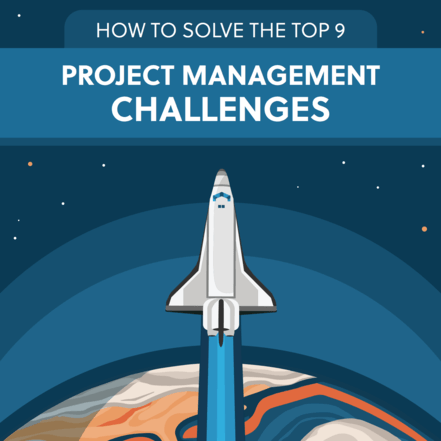In the mid-90s, I managed a project for a utility company that included a team of 20+ people. I have always liked to start my workday early, and one particular Friday, I was already hard at work when my team started trickling in around 8:30 a.m. About 90 minutes later, the CIO, (earning leadership bonus points for this classy move), had the power cut to the entire floor. Everything but the emergency lighting instantly went out, and at this point, he announced that his budget had been cut in half by the CFO, thus our budgets were going to be cut by at least 50 percent. Everyone sat there stunned, while he briefed the project managers on the floor on how layoffs (euphemistically referred to as “resource actions”) were to be carried out. My team lost 10 people that day alone, and after the shock of the personnel changes, we had to come to grips with the fact that our budget was also basically cut in half. Of course, the scope and schedule were barely changed at all. Early in a project’s lifecycle, constraints usually become firm and visible. Sometimes this will confirm that the project should be able to glide across the finish line on time and within budget, but how do you handle the situation where it becomes clear that the budget is unrealistically tight or even downright impossible? The example above was a particularly painful one for me, but I did learn some strategies that helped me with the all-too-familiar mandate to do more with less.
1. Prove it.
As a sponsor, when I am funding a project and the manager asks for more funding, my first response is usually the same: “Prove it.” This is not so much a tightfisted move as it is an opportunity for the project manager to demonstrate his or her understanding of the scope and the risk factors. The truth is, nothing speaks louder than data, and your mastery of these facts will help your case.
2. Understand the constraints.
A successful project is a solution that fits somewhere within a set of given constraints. Everyone has a finite amount of time, money, and resources to work with. This concept is famously described within project management as the iron triangle (a.k.a. the triple constraint). Constraints limit your solution in some way since they restrict the choices you can make. They are like boundaries that you have to operate within in order to deliver the project successfully. The key is that all of these may not be set in stone. The budget might be tightly constrained, but the schedule could have flexibility. Many times the scope is the most flexible aspect of the project. Understanding your budget and the other constraints that border your project is an important step to finding a way to deliver it successfully. One complication is that some project managers tend to inflate their budgets and estimates beyond reasonable padding. While this appears to make sense from the project manager’s perspective, it’s a real problem for the performing organization. If the organization accepts unrealistically inflated estimates, they’ll tie up capital that they could invest in important projects. From the enterprise perspective, unnecessarily tying up capital is universally a bad thing. Also, sandbagging your estimates erodes trust. Do this a few times, and stakeholders won’t take your numbers seriously anymore.
3. Provide options.
Frank Sinatra famously crooned “All or Nothing At All”, but most projects fall somewhere between those extremes. Very few stakeholders get everything they want, but that doesn’t mean they can’t be satisfied with the outcome. The question becomes: “What can you do within the constrained budget?” Creative solutions in a crisis are where professionals can stand out. A great technique here is to let key stakeholders vote on functionality or attributes of the product to help understand their importance. If you can estimate the effort and cost required to complete each item, then your stakeholders can make decisions just like someone trying to maximize their grocery budget.
4. Focus on critical success factors.
Accurately identifying the critical success factors (CSFs—the things that will actually make or break your project) falls somewhere between art and science. The reason this is challenging is that you have to look beyond what people say is important and see the factors that truly influence success. In other words, you have to really understand the underlying needs that drive the project. By prioritizing the CSFs, you should be able to focus on delivering more value earlier on, which only helps your chances of success.
5. Tap into your informal networks.
When researching my book, Alpha Project Managers: What the Top 2% Know That Everyone Else Does Not, I was struck by how the most effective managers were often able to get things done outside of official channels. They found a way to beg, borrow and barter resources to accomplish their project goals. For example, one project I managed needed a database expert for about two weeks. We did not have the budget for this, but we were able to barter with another department by doing a tricky piece of development for them in exchange for the resource we needed. Everybody won, and it really did not increase our costs at all.
6. Work what you have.
One trap to avoid in your thinking is that more funding will solve your problems. This is what I refer to as “lottery mindset.” It’s no secret that people who win large lottery payouts frequently end up in bankruptcy. In fact, the numbers suggest that the bankruptcy rate for these winners is approximately double the rate for the general population. Bottom line: More funding does not automatically make things better. In fact, it can have the unintended consequence of leading to more waste. Once you set aside the automatic assumption that more money is absolutely necessary, you can start to implement Lean thinking. The idea behind lean project management, in general, is that you seek to eliminate all waste and focus (ruthlessly) on activities and processes that deliver value. Lean gives you a new set of optics with which to view your project. The point is not to slash spending, although Lean is a wonderful approach to that. The ultimate goal is to deliver maximum value with maximum efficiency. Lean changes the conversation. Another great way to work with what you have is through value engineering. This is where the team looks at a solution that explores all the ways to get the same overall value for less money. This doesn’t mean the solution will look exactly the same after it has been value engineered. It means you’ll explore every angle to see how you can work within the budget constraints.
7. Understand that resources don’t compensate for low motivation.
Using an example from history (or from Zack Snyder if history is not your thing), in the battle of Thermopylae, 7,000 Greeks defended their homeland against a Persian army that massively outnumbered them. Whatever the factual figures might have been, the Greeks were hugely overpowered—but their dedication and motivation won in the end. As the project manager, you have an opportunity to lead and inspire your team, and this ability separates the great PMs from everyone else.
Summary
There are a lot of challenges that come with project management—it’s one of the occupational hazards! When one of these challenges involves having too few dollars to complete your project, take heart. This is not an automatic project death sentence. Keep in mind the unofficial Marine Corps motto: “Improvise, adapt and overcome.” The best managers can do amazing things in the face of adversity, while others will complain and make excuses.
If you liked this article and would like to master some of the most common project management challenges, download our eBook, How to Solve the Top 9 Project Management Challenges.








